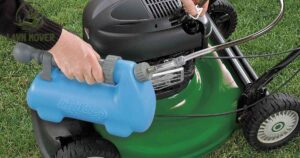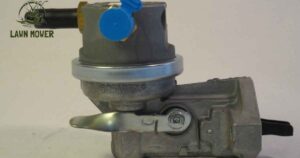A Craftsman riding lawn mower typically requires about 48 ounces (1.42 liters) of oil for optimal performance. However, it’s crucial to consult the owner’s manual for the specific model, as oil capacity may vary. Regularly checking and maintaining the proper oil level is essential. Ensure that you use oil with the recommended specifications in volts for efficient functioning.
Ever wondered about the thirst of your trusty Craftsman riding lawn mower? Delving into the intricacies of its engine, determining the exact amount of oil it craves becomes a crucial maintenance puzzle. Let’s unveil the mystery behind just how much oil your green companion needs to keep those blades spinning smoothly.
A Craftsman riding lawn mower typically requires about 48 ounces (1.42 liters) of oil for optimal performance. It’s essential to check the owner’s manual for specific recommendations and use a high-quality SAE 10W-30 or 10W-40 oil. Regular oil maintenance ensures the engine operates smoothly and extends the mower’s lifespan.
Oil Capacity
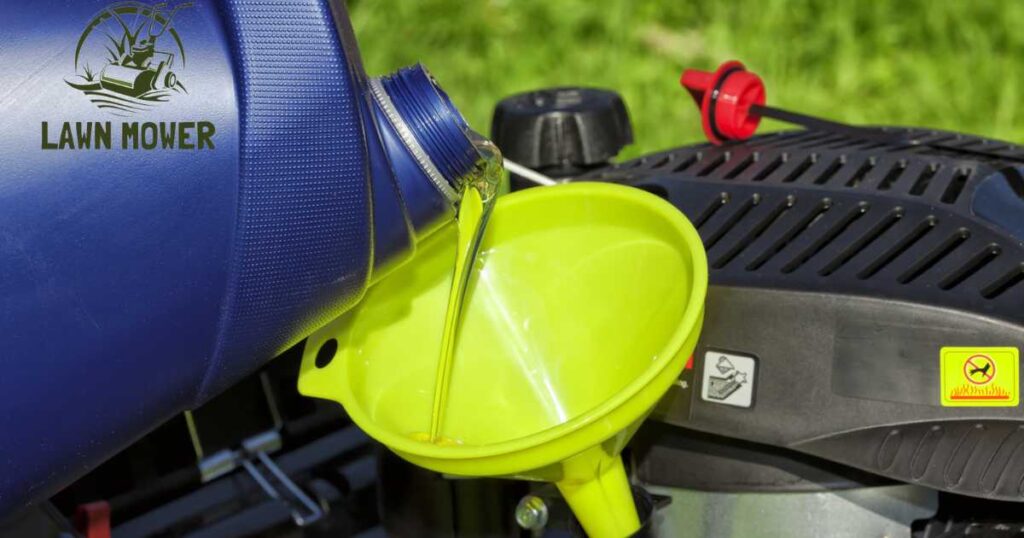
The oil capacity of a lawn mower is a critical factor in ensuring the smooth operation and longevity of its engine. This specification denotes the volume of oil necessary to lubricate the engine’s internal components, reduce friction, and dissipate heat effectively. To determine the precise oil capacity for your lawn mower, it is imperative to consult the manufacturer’s guidelines outlined in the owner’s manual.
Engine designs and sizes can vary significantly among different lawn mower models, leading to diverse oil capacity requirements. Typically measured in ounces or liters, this specification establishes the optimal oil level that guarantees proper lubrication and guards against premature wear and tear.
Regularly checking and maintaining the correct oil level is fundamental in promoting the mower’s overall performance, minimizing the risk of mechanical issues, and extending the lifespan of the equipment.
Type of Oil
Choosing the right type of oil is crucial for the proper functioning of a lawn mower. Most small engines, including those in lawn mowers, benefit from using a high-quality SAE 10W-30 oil. This type of oil works well in a variety of temperatures, providing reliable lubrication to the engine components.
It’s essential to consult the lawn mower’s owner’s manual for specific oil recommendations, as different models may have varying requirements. Additionally, regular oil checks and changes are vital to maintaining optimal engine performance and prolonging the overall lifespan of the lawn mower.
Checking the Oil
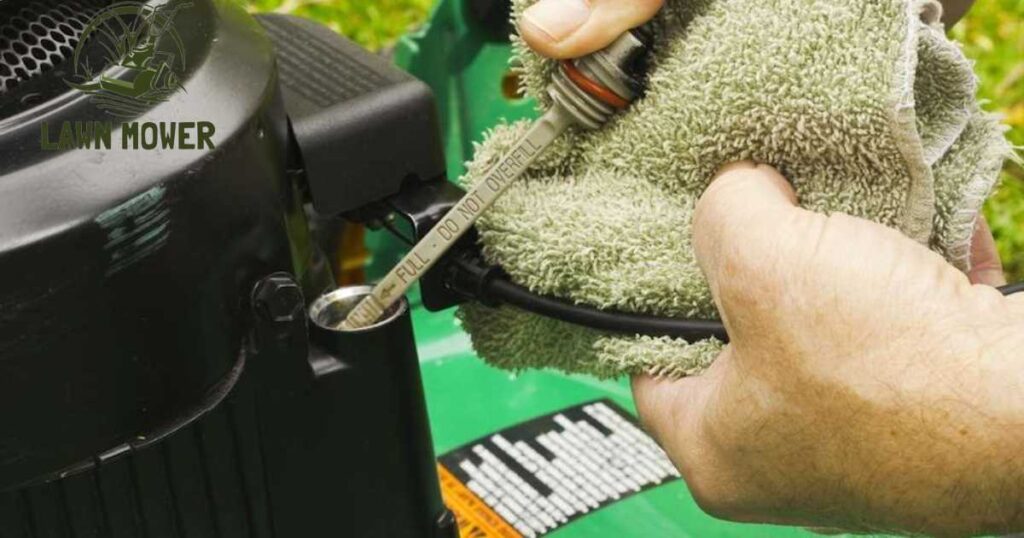
Checking the oil level in your lawn mower is a straightforward yet crucial task for proper maintenance. Start by placing the mower on a level surface and ensuring the engine is cool. Locate the oil dipstick, usually near the engine, and remove it. Wipe the dipstick clean, reinsert it, and then withdraw it again to check the oil level. Add oil if necessary, using the type and amount recommended in the owner’s manual.
Additionally, inspect the oil for its color and consistency. Clean, amber-colored oil is a sign of a healthy engine, while dark or gritty oil may indicate the need for an oil change. Regularly checking and maintaining the oil level promotes optimal engine performance and contributes to the overall longevity of your lawn mower.
Changing the Oil
Changing the oil in your lawn mower is a crucial maintenance task that helps keep the engine running smoothly. To begin, warm up the engine by running the mower for a few minutes to make the oil easier to drain. Locate the oil drain plug beneath the mower, usually near the blade.
Position a drain pan underneath, remove the plug, and let the old oil drain completely. Once drained, replace the drain plug and refill the engine with the recommended oil type and quantity as specified in the owner’s manual.
After refilling the oil, run the engine for a few minutes to circulate the new oil throughout the system. Finally, check the oil level using the dipstick, adding more if necessary. Regular oil changes, typically recommended annually or after 25 hours of use, contribute to the longevity and optimal performance of your lawn mower’s engine.
How to Drain Oil From Husqvarna Lawn Mower

To drain oil from a Husqvarna lawn mower, start by placing the mower on a flat and level surface. Locate the oil drain plug underneath the mower deck or engine. Using a socket wrench or pliers, carefully loosen and remove the drain plug, allowing the oil to flow out into a suitable container. Once all the oil has drained, replace the drain plug securely and dispose of the used oil responsibly, following local regulations or recycling guidelines.
To ensure proper drainage, it’s advisable to run the engine for a few minutes before draining the oil. This helps to warm the oil, making it easier to flow out. Always refer to the Husqvarna lawn mower’s manual for specific instructions and recommended oil-draining procedures to maintain the mower’s optimal performance.
How to Change the Oil in Honda Rincon
Changing the oil in a Honda Rincon is a straightforward process that helps maintain the ATV’s performance. Start by warming up the engine to ensure the oil flows easily. Next, locate the oil drain bolt on the bottom of the engine and place a drain pan beneath it. Remove the drain bolt, allowing the old oil to drain completely.
Afterward, replace the drain bolt and remove the oil filter, replacing it with a new one. Finally, refill the engine with the recommended oil capacity, typically around 3 quarts, and check the oil level using the dipstick to ensure it’s within the appropriate range.
Remember to consult the Honda Rincon’s owner’s manual for specific instructions and oil specifications. Performing regular oil changes not only extends the ATV’s engine life but also contributes to smoother and more efficient operation on various terrains.
How to Change the Oil on a Yamaha ATV
Changing the oil on a Yamaha ATV is a straightforward process that helps maintain the vehicle’s performance. Begin by warming up the engine to ensure the oil flows easily. Next, locate the oil drain bolt on the bottom of the engine and place an oil pan beneath it. Remove the bolt to drain the old oil completely.
Once drained, replace the drain bolt and proceed to remove the oil filter, usually found on the side of the engine. Install a new oil filter and then add the recommended amount of high-quality ATV oil through the designated fill cap. Afterward, start the engine and check for any leaks, ensuring a smooth oil change for your Yamaha ATV.
Remember to consult your Yamaha ATV’s manual for specific instructions and oil recommendations. Additionally, it’s advisable to change the oil and filter regularly to keep the engine in optimal condition and enhance the overall performance of your ATV.
What Kind of Oil Does a Troy Bilt 42000 Snowblower Take?

The Troy-Bilt 42000 snowblower is designed to use a specific type of oil to ensure proper engine lubrication in cold weather conditions. It is recommended to use a high-quality, low-temperature-rated oil such as SAE 5W-30 for optimal performance. This viscosity rating is suitable for cold starts and provides adequate protection for the engine components during operation.
When changing the oil in the Troy-Bilt 42000 snow blower, it’s essential to follow the manufacturer’s guidelines and drain the old oil while the engine is warm for efficient drainage. Additionally, checking the oil level regularly and topping it off as needed ensures that the snow blower functions smoothly and is ready to tackle winter weather challenges.
How to Change Oil in a Craftsman 4-Cycle Weed Eater
| Step | Description |
| 1. | Prepare the Weed Eater: Ensure the weed eater is on a flat, stable surface. |
| 2. | Locate the Oil Drain Plug: Identify the oil drain plug on the bottom of the engine. Refer to the user manual for specific location details. |
| 3. | Warm up the Engine: Run the weed eater for a few minutes to warm up the oil. This helps the oil to flow more easily during the draining process. |
| 4. | Turn Off the Engine: Once warmed up, turn off the engine and disconnect the spark plug wire to ensure safety. |
| 5. | Place a Drain Pan: Position a drain pan underneath the oil drain plug to catch the old oil. |
| 6. | Remove the Oil Fill Cap: Unscrew the oil fill cap to allow air to enter, aiding in smooth drainage. |
| 7. | Remove the Oil Drain Plug: Using a suitable wrench or socket, carefully loosen and remove the oil drain plug. Allow the oil to drain completely into the pan. |
| 8. | Inspect the Oil Drain Plug: Check the drain plug for any signs of damage or wear. Replace if necessary. |
| 9. | Replace the Oil Filter (if applicable): Some 4-cycle engines have an oil filter. If your weed eater has one, replace it according to the manufacturer’s recommendations. |
| 10. | Install the Oil Drain Plug: Once the oil has drained, reattach the oil drain plug and tighten it securely. |
| 11. | Add New Oil: Using a funnel, add the appropriate amount and type of oil recommended by the manufacturer. Check the user manual for specifications. |
| 12. | Check Oil Level: Start the engine and let it run for a minute. Check the oil level using the dipstick, adding more oil if necessary. |
| 13. | Dispose of Old Oil Properly: Take the used oil to a recycling center or an auto parts store for proper disposal. Do not dispose of it in regular household waste. |
| 14. | Reconnect the Spark Plug Wire: Ensure the spark plug wire is securely connected. |
| 15. | Dispose of Used Oil Filter (if applicable): If you replaced the oil filter, dispose of the old one properly. |
| 16. | Record Maintenance: Keep a record of the oil change, including the date and type/amount of oil used. |
Can you use synthetic lawn mower oil?
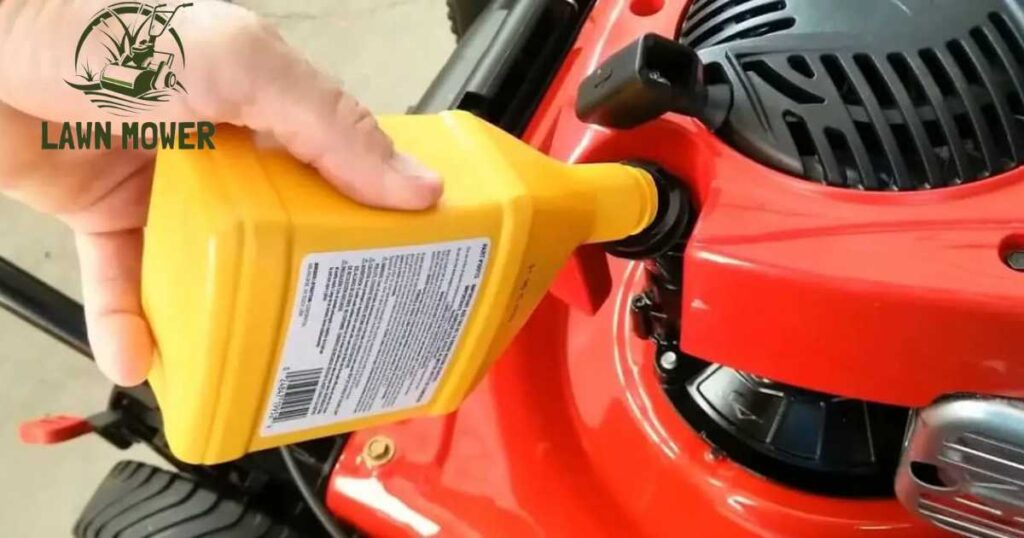
Yes, you can use synthetic lawn mower oil in your mower. Synthetic oils offer several advantages, such as better high-temperature stability, reduced engine wear, and improved overall engine performance. They also tend to provide enhanced protection against deposits and sludge buildup, contributing to a cleaner and more efficient engine operation.
Before making the switch, it’s crucial to check your mower’s owner’s manual to ensure compatibility and follow any specific recommendations from the manufacturer regarding oil type and viscosity. Using synthetic oil can be a smart choice for those seeking improved engine protection and longevity for their lawn mower.
FAQs
How much oil does a Craftsman riding mower hold?
Craftsman riding mowers typically have an oil capacity of about 48 ounces or 1.42 liters. It’s essential to check the specific model’s manual for accurate information.
What type of oil does a Craftsman lawn mower take?
A Craftsman lawn mower typically uses 10W30 motor oil for optimal performance. Always refer to the owner’s manual for specific recommendations.
Can I use regular 10W30 in my lawn mower?
Yes, you can use regular 10W30 oil in your lawn mower unless the manufacturer specifies a different oil type in the user manual.
Conclusion
Determining the appropriate amount of oil for a Craftsman riding lawn mower is crucial for maintaining optimal engine performance and longevity. By referring to the mower’s manual or specifications, users can identify the recommended oil capacity and type. Following these guidelines ensures proper lubrication, reduces wear and tear on engine components, and contributes to the overall efficiency of the mower.
Regular oil checks and changes are fundamental maintenance practices that empower users to enjoy a smoothly operating Craftsman riding lawn mower, ultimately enhancing its durability and reliability.The key takeaway is the significance of adhering to manufacturer recommendations regarding oil capacity and type for Craftsman riding lawn mowers.
A proactive approach to oil maintenance not only safeguards the engine but also promotes a seamless mowing experience. As users prioritize proper oil levels, they contribute to the mower’s overall performance and extend its lifespan, ensuring that the Craftsman riding lawn mower remains a dependable and efficient tool for maintaining a well-groomed lawn.

With a wealth of expertise spanning six years, I am a seasoned professional in the realm of lawn mowers. My mastery includes intricate knowledge of models, maintenance, and optimal performance.







